It's late August and the wind is in the east. This combination of time of year and weather sends you to the coast to look for early autumn drift migrants. Perhaps you'll chance upon a Wryneck if you're lucky, or better still an Icterine Warbler or Ortolan Bunting. Any of these would make for a fine discovery. However, there is one eastern treat that is both realistic at this time of year and a level higher in the rarity stakes – among the cream of the 'early autumn scarce' crop is Greenish Warbler.
This species could be considered a 'birders' bird'. An alternative and rarely used name is 'Dull Green Warbler' – hardly the most exciting moniker. Green and Two-barred Warblers, the two far rarer species formerly treated as conspecific with Greenish, are much more desired by rarity hunters. But for being both a realistic find for most coastal British birders (pretty much) and a treasure of a Phylloscopus, Greenish Warbler deserves acclaim.
If you look closer, a small, delicate warbler is revealed, grey-green above and silky-white below, with a thin and pale wing-bar (that is broader on fresh autumn first-winters). A strong supercilium runs broadly behind the eye and often extends onto the forehead, while a dark eyestripe doesn't quite reach the bill (the lower half of which is pale).
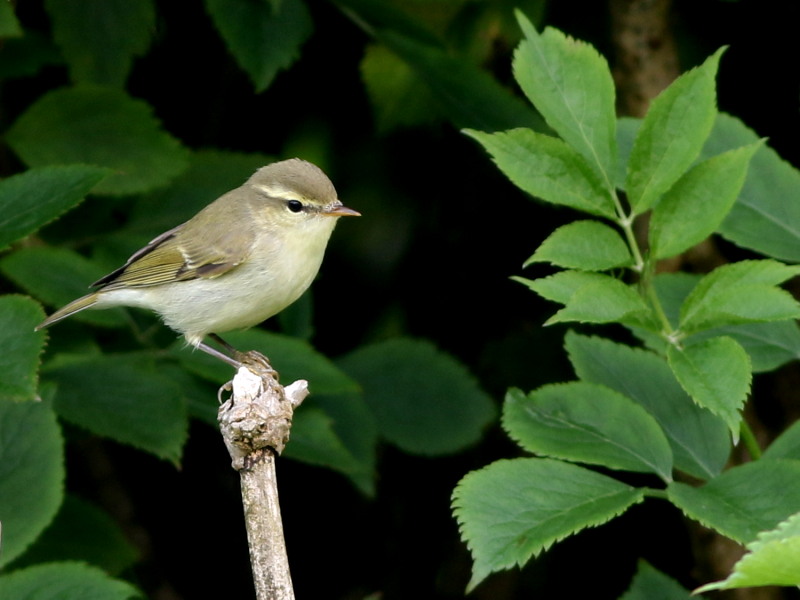
Regular enough to be attainable for the coastal birder, yet scarce enough that it would make for a red-letter day, Greenish Warbler is a prize find of the early autumn period (David Cooper).
Range and forms
Breeding from north-east Europe to East Asia, Greenish Warbler is strongly migratory and moves south-east to wintering quarters in southern (especially India) and South-East Asia. In the Western Palearctic it breeds as far west as Poland (though a handful nest in eastern Germany most years) and east to the Ural Mountains, with the regional breeding distribution also covering the Baltic States, southern Finland, Belarus, north-west Russia and northern Ukraine. It has bred in Sweden before, too.
Greenish Warbler is relatively unfussy when it comes to breeding habitat, favouring inland lowland mixed or deciduous woodland across most of its range, but being open to nesting at coastal sites or even in conifer forests. It's rather fond of wooded parkland or mature gardens – indeed such areas can be the best places to see the species in parts of Europe. Non-breeding birds may even loiter in montane landscapes, with birds recorded as high up as 3,800 m in Bhutan.
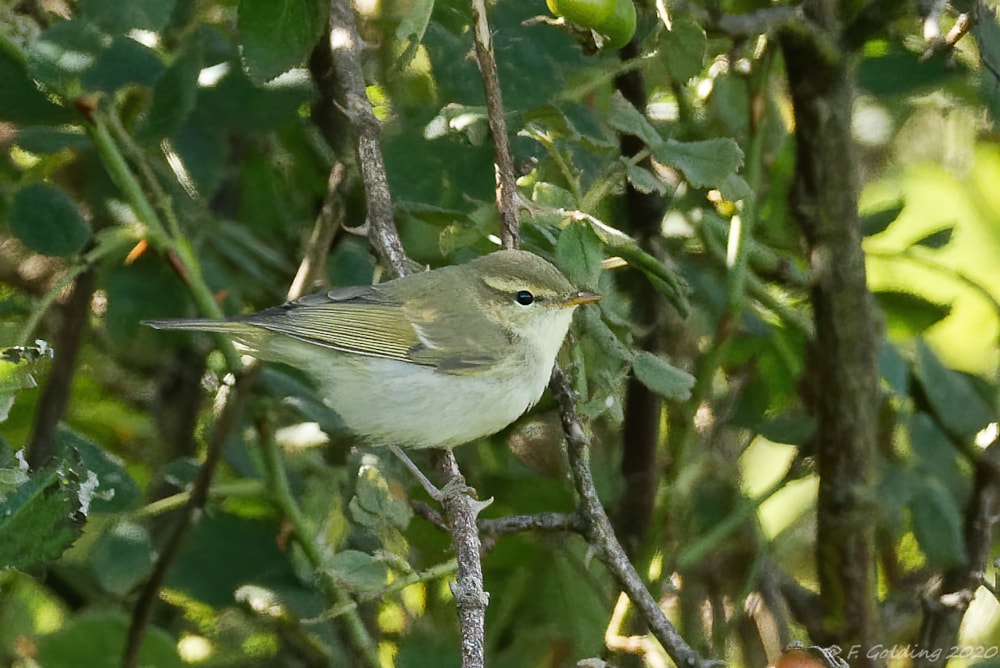
Greenish Warbler, Newbiggin-by-the-Sea, Northumberland (Frank Golding).
There are three subspecies of Greenish Warbler Phylloscopus trochiloides, with the form viridianus the most familiar in Europe. It is in fact the subspecies obscuratus, found in north-west China, that earned the 'Dull Green' name. P t trochiloides breeds along the southern rim of the Himalaya eastwards from Nepal into west China. Hybrids between trochiloides and viridianus were once considered another subspecies, ludlowi.
British status
In Britain, Greenish Warbler is a rare but regular vagrant, averaging a little more than 20 records a year since the millennium. There are influx years – 2005 and 2007 were particularly fruitful, with 47 and 42 records respectively. Since 2005, the species has no longer been considered a national rarity.
Greenish Warbler was once far rarer on our shores, but a westward push of breeding records – such as the aforementioned instances in Germany and Sweden – has coincided with more occurrences in Britain. The presence of frontier breeders are thought to be dictated by weather which, if warm and of a south-easterly component, sees birds push further west beyond their traditional breeding range.
Most British birds occur along the east coast, with a small peak from late May to early June (5-10% of all records; usually singing males) and a larger one from mid-August to mid-September. It is a very rare bird in late autumn. The large arrival in 2007 was almost entirely confined to Norfolk, which accounted for an astonishing 34 of the 42 national records that year, highlighting the species' form along the North Sea coast. The last few years have proved slightly below average, with 14 records in 2019 and 19 in 2018. That said, 2020 seems to have been a better year, with the BirdGuides map of reports nicely populated.
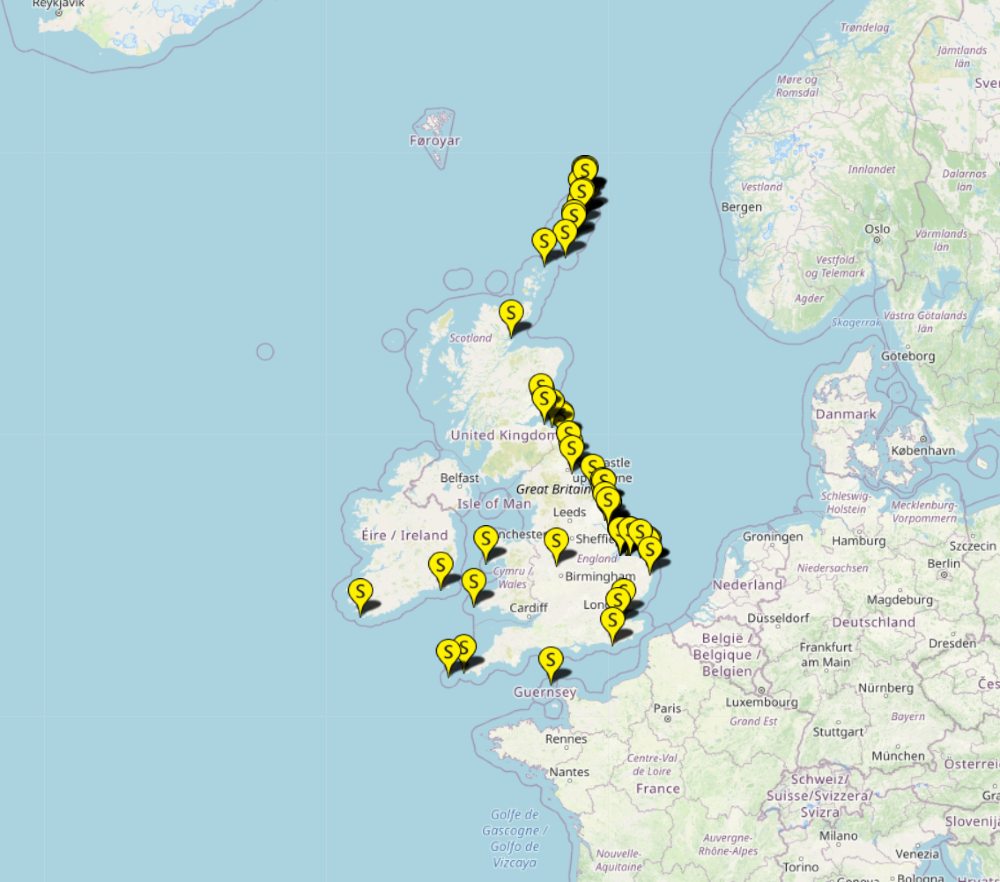
Greenish Warbler records in Britain and Ireland, autumn 2020 (BirdGuides.com).
The map reinforces the fact that the east coast and Northern Isles are the most likely areas to record the species. Norfolk, Northumberland and the Northern Isles have particularly fine form – you have to go back to 2006 for the last year in which Norfolk didn't record one. It is this peak time of year when these areas are most likely to score, especially with an east wind blowing.
It is a genuinely rare bird in the south and west, and more or less the stuff of myth inland (though two in Leicestershire in 1996 show that anything is possible!). It's unsurprising that most southern and western records tend to occur a touch later in the year, presumably as birds filter south through the country. For example, in the exceptional year of 2007, the only two October birds were noted in Greater London and Scilly.
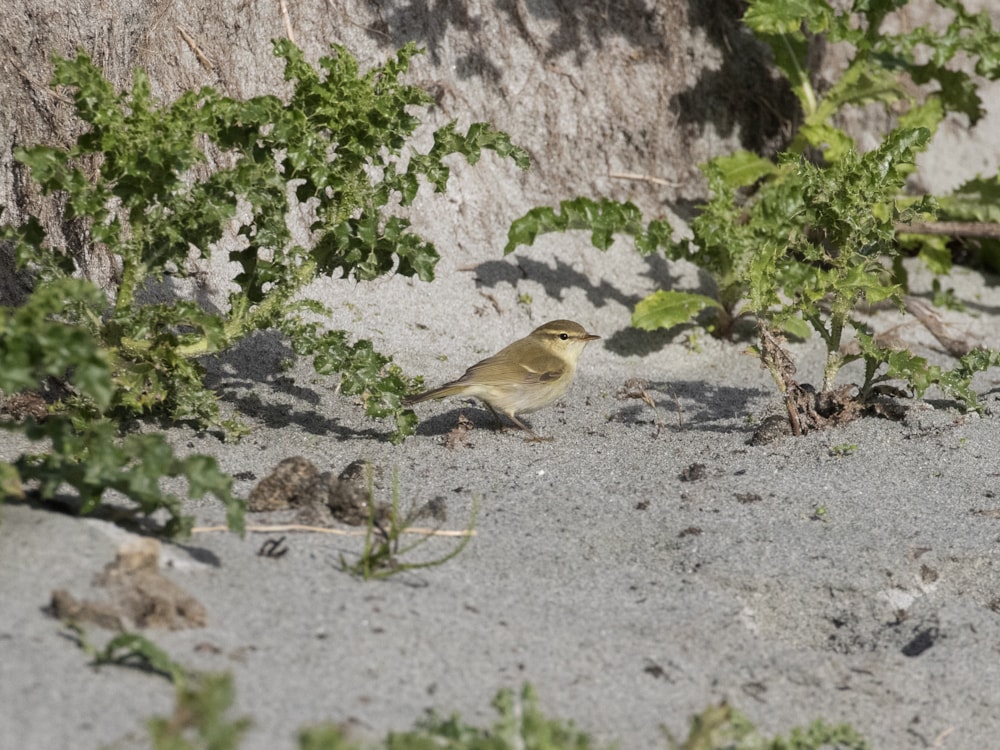
Shetland usually produces a few Greenish Warblers each year. This one was on Unst in autumn 2020 (Jamie Partridge).
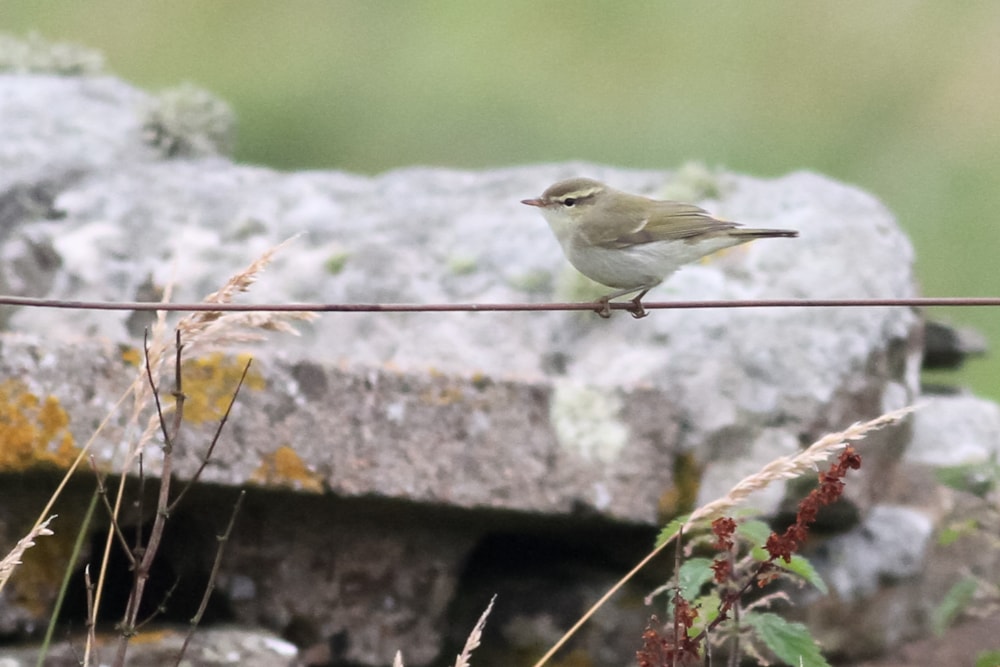
Orkney, too, has a good hit rate, with this one photographed on North Ronaldsay (Dante Shepherd).
Extreme spring overshoots can also end up very far west, too, such as birds in Caernarfonshire, Cornwall and Pembrokeshire in 2019 and in Lancashire in 2013 (see here). It's not unrealistic that a breeding attempt is made in Britain one day, though the stop-start nature of the species' westward shuffle means this is unlikely to happen soon.
In the field
Should you have the great fortune of finding a Greenish Warbler, expect to work for it. Like most small Phylloscopus warblers, they are hyperactive, moving quickly as they flit and fall through the vegetation. This species will frequently flick its wings and, occasionally, its tail, in a downward motion. Any coastal migrant passerine hot-spot could yield a bird, which may attach itself to a local roving tit and warbler flock, or perhaps settle for a short period in an area with a particular concentration of small insect prey.
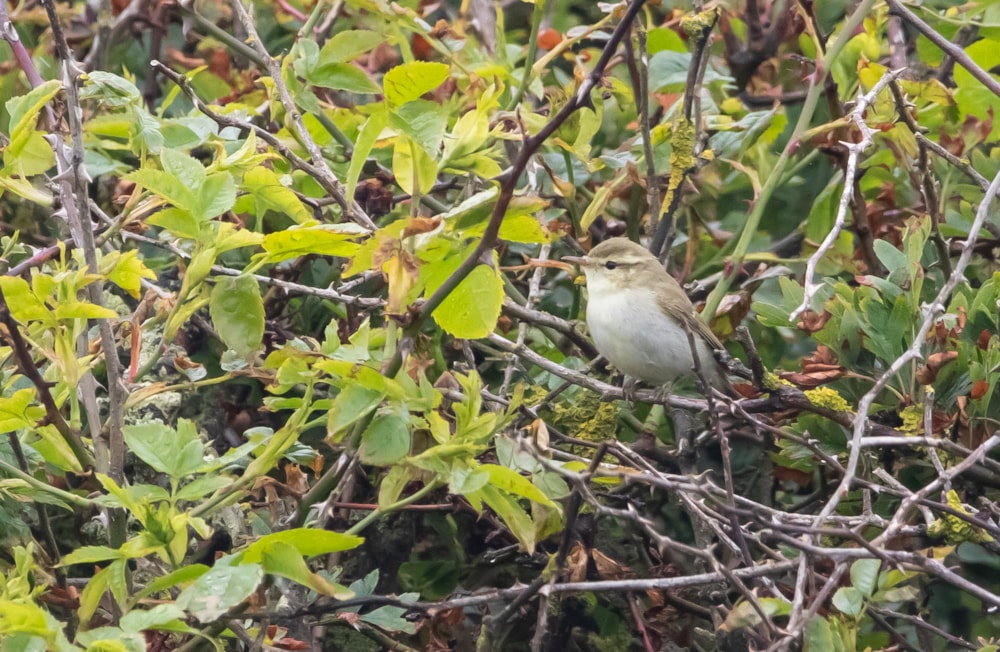
Look for a Greenish Warbler among roving tit and warbler flocks (David John Tucker).
A livewire individual like this may be best identified by its call, which is distinct and easily separates it from any other confusion species – a clearly disyllabic note, which you can listen to below. It is often described as sounding similar to Pied Wagtail, and you can hear why. The call is very similar to Two-barred Warbler, which can pose significant identification problems. Obtaining a recording of any vocalisations is helpful. Arctic Warbler is the traditional confusion species – this old BirdGuides ID guide contains lots of useful tips for separating the two species.
Perhaps, if there's an easterly airflow in the next few weeks and you’re out birding somewhere on the east coast, you’ll be lucky enough to have a 'Dull Green Warbler' brighten up your day.
References
Cramp, S, Snow, D W, Perrins C M, and Doherty, P. 1998. The complete birds of the Western Palaearctic. Oxford University Press, Oxford.
Hagemeijer, W J M, and Blair, M J. 1997. The EBCC atlas of European breeding birds. Poyser, London.
Inskipp, C, Inskipp, T, and Sherub. 2000. The ornithological importance of Thrumshingla National Park, Bhutan. Forktail, 16: 147-162.
Jobling, J A. 2010. The Helm Dictionary of Scientific Bird Names. Christopher Helm, London.
Kehoe, C, and White, S. 2021. Report on scarce migrant birds in Britain in 2019. British Birds, vol. 114, 8: 44-464
Kehoe, C, and White, S. 2020. Report on scarce migrant birds in Britain in 2018. British Birds, vol. 113, 9: 533-554.
Mitchell, D. 2017. Birds of Europe, North Africa and the Middle East An annotated checklist. Lynx Edicions, Barcelona.
Töpfer, T. 2007. Nachweise seltener Vogeltaxa (Aves) in Sachsen aus der ornithologischen Sammlung des Museums für Tierkunde Dresde. Faunistische Abhandlungen, vol 6, 3: 63-101.



